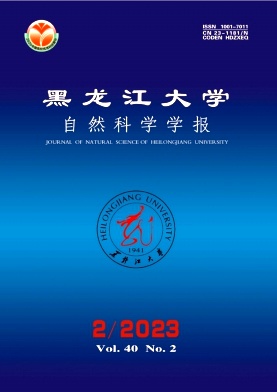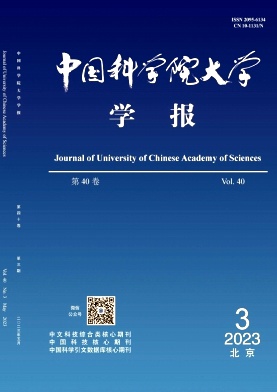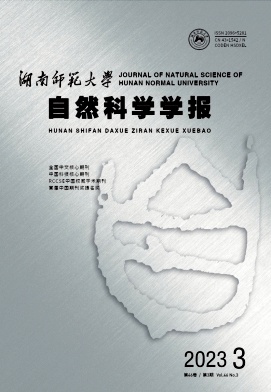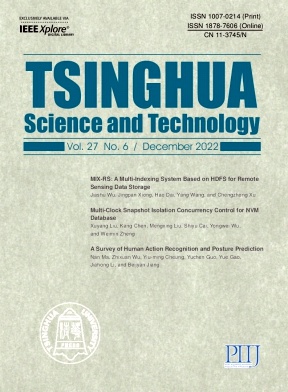- 期刊详情
- 栏目设置
- 期刊荣誉
- 期刊文章摘录
- 相关期刊
- 点评详情
 期刊投稿1-3月见刊
期刊投稿1-3月见刊 订阅咨询一站式咨询服务
订阅咨询一站式咨询服务 杂志投稿在线杂志订阅
杂志投稿在线杂志订阅 发表咨询专人持续跟踪服务
发表咨询专人持续跟踪服务
期刊详情
- 期刊介绍
- 主管单位:中国科学院
- 主办单位:中国科学院上海光学精密机械研究所;中国光学学会
- 出版地方:上海
- 快捷分类:科学
- 国际刊号:1671-7694
- 国内刊号:31-1890/O4
- 邮发代号:4-644
- 创刊时间:2003
- 发行周期:月刊
- 期刊开本:大16开
- 下单时间:1-3个月
- 业务类型:杂志服务
Chinese Optics Letters简介
《Chinese Optics Letters 》办刊路线:国际化。办刊宗旨:快速、全方位地报道国际光学领域中的最新理论研究、科技成果和创新技术,争取使之成为国内外光学研究的一个重要的成果传播平台,为光学的发展作出更大的贡献。
《Chinese Optics Letters 》内容涵盖:包括光通信、激光光学、量子光学、非线性光学、超快光学、光学材料、光学器件、光学测量、光学成像、光信息处理、光存储、医用光学和生物光学等光学研究的各个主要范畴。本刊目前已被SCI-E、EI、CA、CSA和MSB-S等世界知名检索机构收录。同时,也被美国光学学会主办的国际光学界最著名、最常用的期刊文献数据库OpticsInfoBase收录。通过这些平台,在本刊上发表的论文可以被全世界的读者迅速地检索和引用。
杂志文章特色
1. Title
The title should be concise but informative. Avoid beginning with an article or a preposition. The words "new" or "novel" should be avoided in the title and the text for legal reasons. Titles may be edited by the publisher to facilitate computer search.
2. Author names and Affiliations
Author names should be given in full and consistent form to facilitate indexing. Affiliations and postal addresses for all authors should appear on the title page.
3. Abstract
The abstract should be no longer than 100 words. It should be informative, without descriptive words or citations, and contain the major conclusions and quantitative results or other significant items in the paper. Together with the title, the abstract must be adequate as an index to all the subjects treated in the paper, and will be used as a base for indexing.
4. OCIS Codes
OCIS codes should be provided to help with indexing. This set of codes was formulated by the Optical Society of America and well-known in the optical research world. OCIS codes are available on Chinese Optics Letters’ web page and the OSA publication web pages. Each manuscript must be given 2-4 OCIS codes below the abstract, and the principal index code should be placed first.
5. Equations
Equations should be punctuated and aligned to bring out their structure, and numbered consecutively in round brackets on the right-hand side of the page.
Notation. Notation must be legible, clear, compact, and consistent with standard usage. In general, acronyms should be defined at first use.
Variables and Vectors. Set single-letter variables in italics (Eg. M). Set vectors in boldface (Eg. m). Functions, derivative "d," abbreviations, and multi-letter identifiers should be set in roman (plain) type (Eg. α, cos, ∫...dx).
Fences. For simple bracketing the usual order of parentheses and brackets is { [ ( { [ ( ) ] } ) ] }.
Bit and Byte. The standard abbreviations for bit and byte are b and B, respectively. To avoid confusion, these units should be spelled out in most cases (1 bit, 20 GB). Display equations should be broken and aligned for two-column display unless spanning across two columns is essential. Equations should be centered with equation numbers set flush right. For Math Type math, use the Format Equations feature to format all equations as Times + Symbol 10. Note: There must be a blank line space above and below each displayed equation.
6. References
References should be numbered consecutively in the order in which they are first referenced in the body of the manuscript. Two references [2,3] should be included together, separated by a comma, and three or more consecutive references should be indicated by the bounding numbers and an en dash [1-4]. When compiling your references, be sure to include the titles of articles. COL requires this information before a paper can be sent to peer review. The reference titles will subsequently be removed by copy editors before they are published, so this information is not included in the length estimate sent to authors when a positive decision is made by the editor. All reference authors should be included in the reference list but when reference authors are mentioned in the text, use surnames only (unless further clarity is needed), and use "et al." and first author name when three or more authors are given. The format of references is as follows:
Journal paper
(1). Q. Ji, X. Ma, J. Sun, H. Zhang, and Y. Yao, "Novel method for measurement of effective cavity length of DBR fiber", Chin. Opt. Lett. 8, 398 (2010).
Book
(2). N. Bloembergen, Nonlinear Optics (Springer, 1965).
Paper in published conference proceedings
(3). R. E. Kalman, "Algebraic aspects of the generalized inverse of a rectangular matrix", in Proceedings of Advanced Seminar on Generalized Inverse and Applications 111 (1976).
SPIE proceedings
(4). S. K. Griebel, M. Richardson, K. E. Devenport, and H. S. Hinton, "Experimental performance of an ATM-based buffered hyperplane CMOSSEED smart pixel array", Proc. SPIE 3005, 254 (1997).
Paper accepted for publication
(5). H. Qi, M. Zhu, W. Zhang, K. Yi, H. He, and J. Shao, “Dependence of wavefront errors on the nonuniformity of thin film", Chin. Opt. Lett. (to be published).
Internet links
(6). A. G. Ramm, H. Wang, and J. Ye, "Invisible obstacles", http://www.arxiv.org/abs/math-ph/0608034 (June 1, 2011).
Patent
(7). K. Zhang, J. Zhang, R. Wang, R. Guo, J. Wang, and K. Peng, “All solid state single frequency and frequency-doubled laser” (in Chinese) Chinese Patent ZL98125474.8 (2000).
7. Figures and Tables
Figures
Figures should be suitable (resolution above 300 dpi) for immediate reproduction and embedded in the text. They should be set as one column wide (6-8 cm) if possible unless two-column display is essential. In the figures, the main lines should be about 0.3 mm in width, and the assistant lines 0.15 mm. Notations in the figures should be distinct and consistent with the same ones in the text, and their font size will be 7-9 pt. Figures should also be uploaded as separate figure files. Each figure should have its own caption. Color Art is Online Only, and free to authors.
Tables
Tables must be numbered in order of appearance and identified with appropriate titles. The table title, which should be brief, goes above the table. Note that tables are usually typeset, not scanned (tables cannot be electronically reduced in size). Tables should be set in one column wide if possible and be placed near their first mention in the body.
Table 1. Main Parameters Used in the Numerical Calculations
8. Funding Sources
Please identify all appropriate funding sources by name and contract number in the Acknowledgment section.
9. Article Length and Proof
Note that Chinese Optics Letters has a limit of five printed pages. If a paper exceeds this limit, it must be shortened before the paper is accepted. If the page proof is over the five-page limit, the proof must be shortened before the paper can be assigned to a final issue. Authors should use the COL Word or LaTeX templates to prepare manuscripts to facilitate length checking.
Authors will receive page proofs of their papers. Corrected proofs should be returned to the COL Editorial office as soon as possible, to avoid publication delays.
10. Chinese Optics Letters Publication Fees
COL requires authors to pay a publication fee. Authors should pay the fee after their paper has been accepted for publication. Current fees in effect starting on January 1, 2009, is 500 RMB (100 USD) per page.
11. Copyright
As the manuscript has been accepted, all authors should transfer the copyright of the article, including that of the printing and on-line version, to the publisher. All authors must sign the Transfer of Copyright Agreement before the article can be published. This transfer will ensure the widest possible dissemination of information.
Editors would inform the corresponding author to return the copyright transfer agreement before the chief- editor’s final examination
杂志分析报告
年度被引次数报告(学术成果产出及被引变化趋势)
年度期刊评价报告(本刊综合数据对比及走势)
注:年度总文献量的统计不包含资讯类文献,如致谢、稿约、启事、勘误等
注:比率 = 当年基金资助文献量 / 当年发文量 * 100%
注:当年发文量的统计不包含资讯类文献,如致谢、稿约、启事、勘误等
Chinese Optics Letters栏目设置
Fiber optics and optical communications,Lasers and laser optics,Lasers, Optical Amplifiers, and Laser Optics,Fiber Optics and Optical Communications,Materials,Lasers and Laser Optics,Imaging systems,Optical devices,Instrumentation,measurement,and metrology,Nonlinear Optics,Nanophotonics, Metamaterials, and Plasmonics,Diffraction and gratings,Optoelectronics,Holography,Nonlinear optics,Atomic and molecular physics,Spectroscopy,Integrated Optics,Physical Optics,Special issue on photonics based on 2D noncarbon materials,Optical Materials,Medical optics and biotechnology,Special Issue on Extraordinary 2D-Materials-Based Nanophotonics,Quantum optics,Regular Paper_Lasers and laser optics,Integrated optics,Imaging Systems and Image Processing,Optical design and fabrication,Ultrafast optics,Special Issue on Soft-matter Photonics,Optical Design and Fabrication,Diffraction,Gratings,and Holography,Quantum Optics and Quantum Information,Ultrafast Optics:Fundamentals and Applications,Thin films,Detectors,Instrumentation, Measurement, and Optical Sensing,Microwave Photonics,Biophotonics,Optics at surfaces,Instrumentation,Measurement,and Optical Sensing,Atmospheric and oceanic optics,Special Issue on Optical Metasurfaces:Fundamentals and Applications,Optical Sensing,Measurements,and Metrology,Instrumentation, measurement, and metrology,Remote sensing and sensors,Focus Issue on Microwave Photonics_High-Speed Optoelectronic Devices,Atomic and Molecular Optics,Image processing,Light-matter Interaction,Imaging Systems,Plasmonics and Metamaterials,Scattering,FEATURE ISSUE ON DIGITAL HOLOGRAPHY AND 3D IMAGING,X-ray optics,SPECIAL ISSUE ON MULTIPHOTON PROCESSES,Geometric optics,Ultrafast Optics,Infrared and Terahertz Photonics,Physical optics,PAPERS_Computer-generated Hologram,Medical Optics and Biotechnology,the 50th Anniversary of the Invention of Optical Fiber Communications,X-ray Optics,Regular Papers_Nonlinear Optics,Diffraction and Gratings,Coherence and statistical optics,Fourier optics and signal processing,Biomedical Optics,PAPERS_Auto-stereography and Virtual Reality,Metal Halide Perovskite and Their Applications,Optical Devices,Other areas of optics,Instrumentation,Measurement,and Metrology,Atomic and Molecular Physics,Thin Films and Optics at Surfaces,REGULAR PAPERS_Lasers and laser optics,Thin Films,Lasers and laseroptics,Other Areas of Optics,PAPERS_Digital Holography,PAPERS_3D Holographic Display,Visual Optics and Displays,Nolinear Optics,Remote Sensing and Sensors,General,Vision, color, and visual optics,Image Processing and Machine Vision,Lasers and laser optics_Editor's Pick,Optical data storage,A tmospheric and oceanic optics,Medical and Biological Imaging,Geometrical Optics,Optics at Surfaces,Other Areas of Optic,Fiber Optic and Optical Communications,Quantumn Optics,REGULAR PAPERS_Image processing,Vision,color,and visual optics,REGULAR PAPERS_Imaging systems,Corrigendum,Microscopy,Machine vision,Optics in Interdisciplinary Research,Vision Color,and Visual Optics,Image Processing,Atomicand Molecular Physics,Quantum Optics,REGULAR PAPERS_Optical devices,Regular Papers_Spectroscopy,Medicai Optics and Biotechnology Processing,REGULAR PAPERS_Vision,color,and visual optics,Coherence and Statistical Optics,Opticaldevices,Geometri coptics,Instrumentation measurement and metrology,REGULAR PAPERS_Remote sensing and sensors,REGULAR PAPERS_Spectroscopy,Vision, Color, and Visual Optics,REGULAR PAPERS_Fiber optics and optical communications,Remote sensing and sensor,EDITORIAL,Fourier Optics and Signal Processing,Instrumentation,Measurement,andMetrology,CALL FOR PAPER,REGULAR PAPERS_Nonlinear optics,The 50th Anniversary of the Invention of Optical Fiber Communications,Optics in computing,Atmospheric and Oceanic Optics,REGULAR PAPERS_Detectors,Solar Energy and Photovoltaics,Thinfilms,REGULAR PAPERS_Coherence and statistical optics,Editorial,REGULAR PAPERS_Materials,Instrumentation Measurement and Metrology,REGULAR PAPERS_Diffraction and gratings,REGULAR PAPERS_Medical optics and biotechnology
期刊文章摘录
- 免费
咨询 - 订阅咨询
- 期刊推荐
- 联系电话发表咨询:023-6549-4411
订阅咨询:023-6033-8768













点评详情